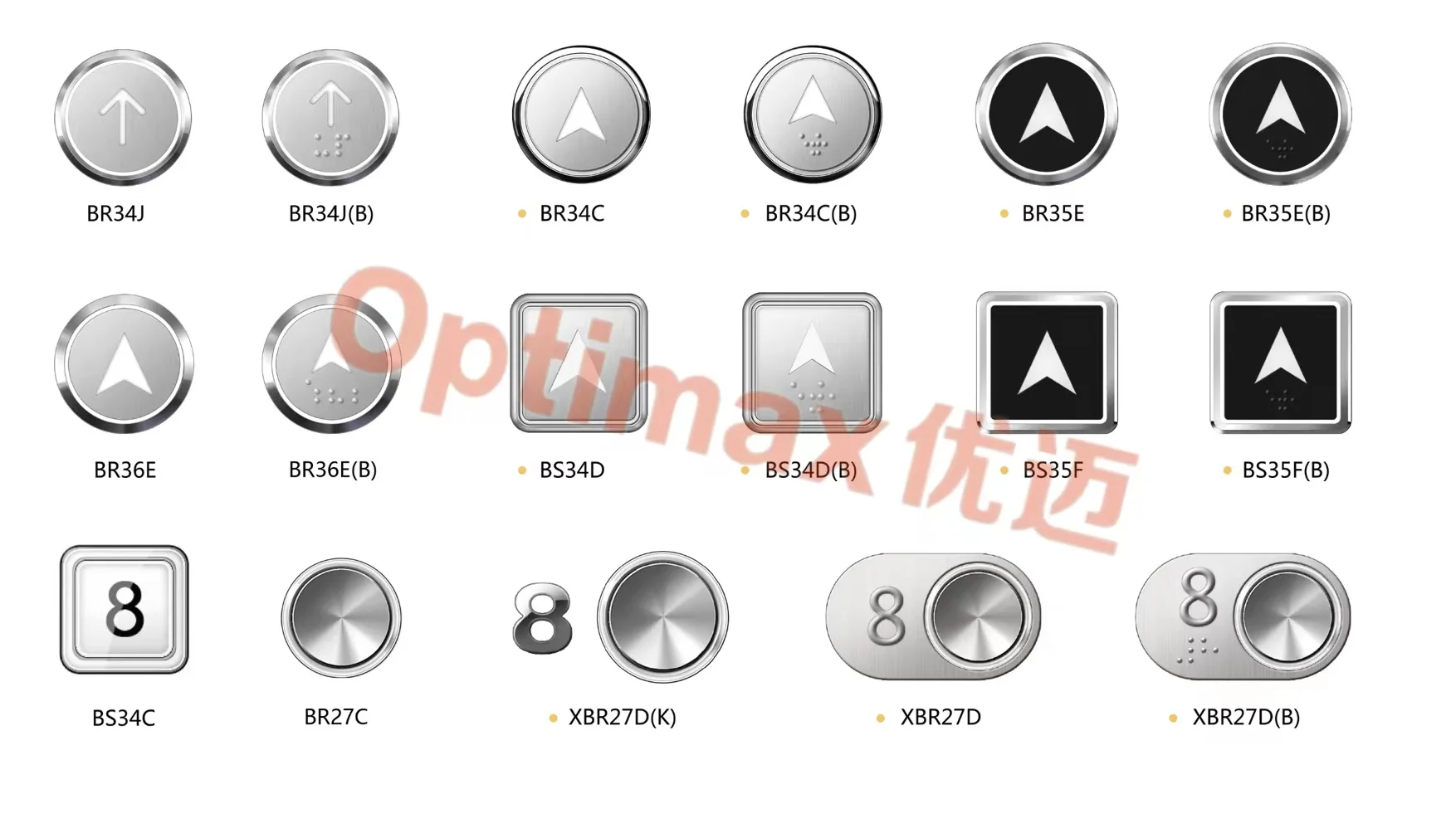- This topic is empty.
-
AuthorPosts
-
27/04/2025 at 23:38 #95056
Elevators are essential to modern buildings, providing a means of efficient vertical transportation for people and goods in high-rise structures. Whether in residential, commercial, or public spaces, elevators are indispensable for improving accessibility and saving time. One crucial element of the elevator system that ensures its smooth operation and user-friendly experience is the elevator push button. While these buttons might seem simple, they are fundamental to the proper functioning of elevators, ensuring both safety and convenience for users. This article Optimax delves into the role and design features of elevator push buttons and highlights their significance in modern vertical transportation systems.

The Role of the Elevator Push Button in Vertical Transportation
Elevator push buttons are central to user interaction with the elevator system. These buttons, located both inside the elevator and on each floor, allow passengers to communicate their desired floor selection, call the elevator to a specific location, and activate other essential functions, such as door opening or emergency stops. In a way, elevator push buttons serve as the control interface, enabling the elevator system to respond to passengers' needs.
Although the functionality might seem straightforward, the design and functionality of these push buttons directly impact the user experience. Elevator push buttons must be designed with ease of use, accessibility, and functionality in mind, ensuring that passengers can quickly and intuitively select their desired floor or initiate specific actions. Furthermore, safety features like the emergency stop button and alarm button are often integrated into the push button system, offering reassurance to passengers in case of emergencies.
As modern buildings become more complex and taller, with more people relying on elevators, the need for reliable, intuitive, and efficient push button systems is becoming even more crucial. These systems enable elevators to work seamlessly, providing the safety and convenience required for efficient movement within multi-story buildings.
Key Design Features of Elevator Push Buttons
The design of elevator push buttons is paramount to their usability, durability, and functionality. Several important features must be considered to create a push button system that is not only user-friendly but also resistant to wear and capable of enduring frequent use. Let's explore these key design considerations.
1. Ergonomics and User-Friendliness
One of the most essential aspects of designing elevator push buttons is ensuring they are ergonomically accessible to all users, including individuals with disabilities. Push buttons must be positioned at an optimal height to ensure ease of use for people of varying physical abilities. The inclusion of braille on buttons is necessary to accommodate visually impaired passengers. Additionally, tactile feedback mechanisms, such as raised buttons or audible sounds when a button is pressed, help guide users, particularly those with visual impairments, in making their selections.
The physical design of the push buttons should also include proper spacing to prevent accidental presses, which can be frustrating for users. Buttons that are too close together or poorly spaced might lead to errors in floor selection, leading to an inefficient user experience. Backlit or illuminated buttons are a popular feature, especially in high-traffic areas or environments with low ambient lighting, such as office lobbies or basement levels. These illuminated buttons make it easier for users to identify their choices, even in dimly lit areas.
2. Material and Durability
Elevator push buttons are subject to frequent use, particularly in buildings with high foot traffic. As a result, they need to be durable and resistant to wear and tear. For this reason, materials such as stainless steel, aluminum, and high-grade plastic are commonly used for their longevity and corrosion resistance. Stainless steel, for example, is often chosen for its ability to withstand frequent pressing and cleaning without showing signs of wear.
In addition to physical durability, the materials used should be able to resist damage from environmental factors such as moisture, dust, and temperature fluctuations. This is particularly important in elevators located in areas exposed to humidity, like hospitals, shopping malls, or swimming pools. Waterproof, dustproof, and rust-resistant buttons ensure the system functions optimally for extended periods, reducing maintenance and repair costs.
3. Aesthetic Design
While functionality is the primary concern, the aesthetic design of elevator push buttons cannot be overlooked. The look of the push button system contributes to the overall appearance of the elevator, which often plays an essential role in the building's interior design. In modern luxury buildings or high-end commercial spaces, sleek, minimalist designs with polished finishes such as chrome, brushed nickel, or glass are popular. These finishes not only make the buttons look aesthetically pleasing but also provide a modern touch that complements contemporary elevator interiors.
In high-traffic environments or commercial buildings, where elevator systems may be subjected to significant wear and tear, rugged yet stylish designs are also available. As technology advances, the introduction of touchless or capacitive buttons with a clean, seamless appearance is gaining traction. These touchless systems not only enhance the elevator's aesthetics but also promote hygiene by minimizing direct physical contact.
Elevator push buttons are integral to the operation, safety, and usability of modern elevator systems. They not only facilitate floor selection and control but also incorporate critical safety features to ensure passengers' well-being. As technology advances, the design and functionality of elevator push buttons continue to evolve, with the introduction of touchless systems, capacitive buttons, and digital interfaces enhancing user experiences and operational efficiency. With a focus on accessibility, durability, and aesthetics, modern elevator push button systems continue to provide the essential interface that ensures smooth, safe, and reliable vertical transportation in buildings across the globe.
https://www.xizi-ec.com/Mechanical-button.html
http://www.xizi-ec.com
Hangzhou Optimax Tech Co., Ltd. -
AuthorPosts
- You must be logged in to reply to this topic.
